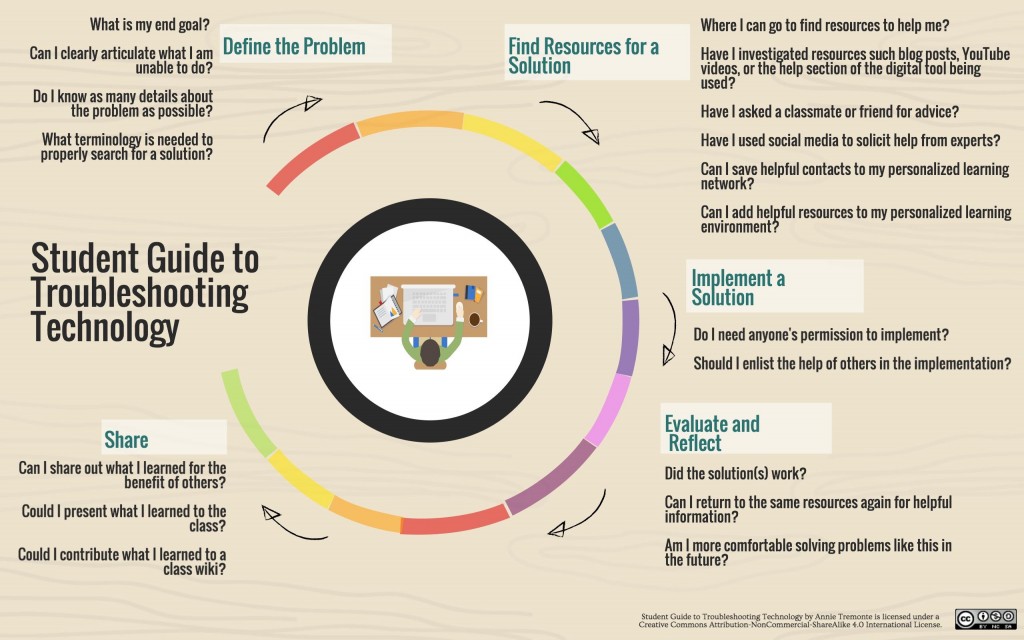<-Return to ISTE 3 Digital Age Learning Environments
Troubleshoot basic software, hardware, and connectivity problems common in digital learning environments
Ed Tech Lead
My role as an Ed Tech Lead in my school gives me the opportunity to help teachers with troubleshooting needs. Troubleshooting technology will always be a necessity. As a result, I have attempted to use my leadership role to also promote the idea that “plan b” approaches, in addition to low approach methods of tech implementation are not only okay, but encouraged. In fact, one of my very first tasks as an Ed Tech Lead was to present my role to the staff, alongside the professional learning that I would be offering during the year. I had snazzy videos and an online presentation all ready to go. It so happened that the internet was down that morning and, as a result, nothing I had prepared could be shown. I could have been embarrassed by this, but instead I used this setback as an opportunity to model what adjusting and improving looks like when this happens. I shared my key points and laughed about the situation, highlighting that this is exactly what can happen with technology with the best laid plans. I think sometimes we hold ourselves to a standard of expertise and perfection that negates the real world experiences we are trying to teach to our students. Technology is not the answer, but one of many methods that can be used to educate.
Guiding Students to Troubleshoot More Autonomously
I have also tried to heavily promote student involvement in the troubleshooting process. Not only is the troubleshooting of student concerns an overwhelming prospect in a room of thirty students, but the ability to problem solve is a necessary skill for our students to learn as part of their preparation for future careers. As a result, I explored this in my blog post, ISTE 6: Guiding Students to Troubleshoot More Autonomously, and created the student guide to troubleshooting technology to aid students in the regular process above.
<-Return to ISTE 3 Digital Age Learning Environments
